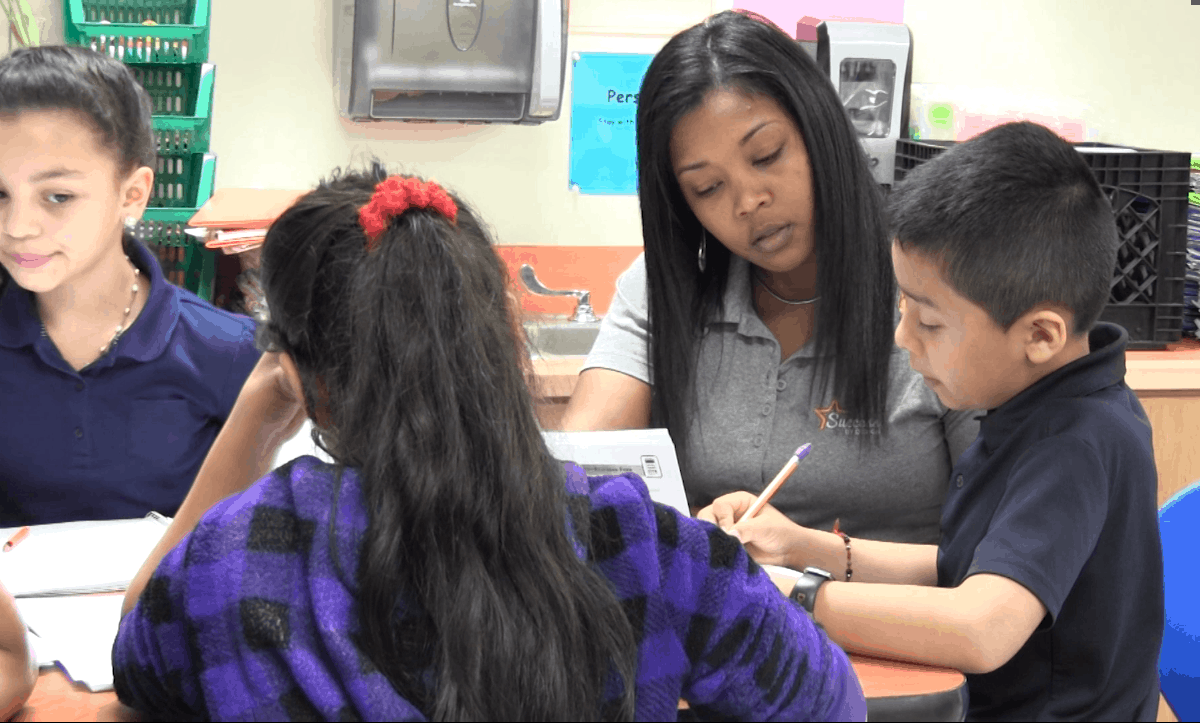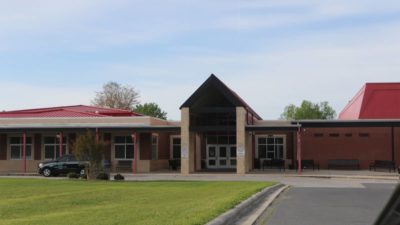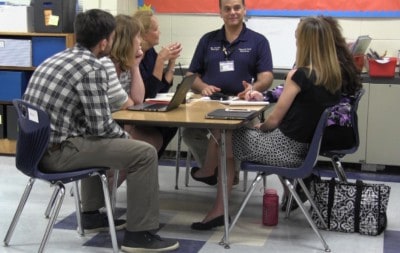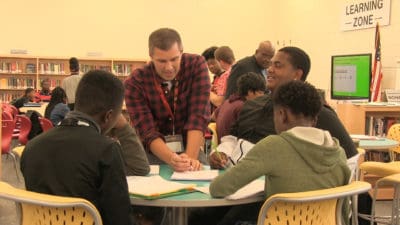

Can deep dives into large flows of student learning data actually lower teacher stress? Successful multi-classroom leaders, who lead small teaching teams in data analysis, say yes. When schools focus on small teams led by highly successful teachers, they help address the concerns North Carolina teachers expressed in a recent EdNC.org survey about professional development on using data and about having time to analyze and use data.
In the survey, to which 822 self-selected teachers responded, teachers generally expressed confidence in their ability to use data to improve instruction, and said using it is important. But only about half agreed that their school or district provides enough professional development about using data (56%) and accessing data (58.8%), and only half agreed that their school or district’s professional development is useful for learning about data use (50.1%).
That’s a huge missed opportunity, and one that schools using Opportunity Culture models — centered on Multi-Classroom Leadership — directly address. Multi-classroom leaders, or MCLs, are teachers with a record of strong student growth who provide intensive, job-embedded guidance and support to teachers that focuses on what they and their students need right now to succeed.
MCLs lead a small teaching team, ensuring strong lessons and teaching methods through frequent, on-the-job development while continuing to teach part of the time in various ways. School teams redesign schedules to provide additional school-day time for MCL teams to plan and collaborate.
MCLs earn substantially higher supplements (averaging more than 20% of teacher pay in Opportunity Culture sites nationwide) within the regular school budget. About 30 sites in 10 states now use Opportunity Culture models, including nine North Carolina districts.
How job-embedded PD helps teachers use data
Over the past seven years, since schools first used Opportunity Culture concepts created by Public Impact, I’ve interviewed many MCLs, their team teachers, principals, and superintendents — and student data always comes up.
The MCL model creates a safe space for teachers, they say. Because MCLs are accountable for the learning results of all of the team’s students alongside their teaching teams, teachers know their MCL is “on my side.” MCLs frequently talk about “our kids.” That team focus on helping all of the students together helps teachers feel safe sharing data that shows where they or their students struggle, and getting the guidance and help they need — since everyone is sharing their data.
“If we want to turn around the trajectory of our school, if we want to know that we are getting students prepared in significant large numbers, we have to work together,” Charlotte-Mecklenburg Schools MCL Jacqueline Smith said.
Every teacher on her team can see the grade-level, side-by-side tracker with all of the data and they analyze it together, with Smith leading the way “to make sure that we’re pushing kids to the mastery that we know they can have.”
When Erin Burns was an MCL in Charlotte, she found discussing what needed to change in the classroom was easier using data because “it’s impersonal and objective; it doesn’t feel like an attack. And it gives us the specific information we need to pinpoint a possible solution.”
To keep team data meetings focused and productive, Burns prepared for them intensively.
“I looked at all of the teachers’ data as a whole, and then individually by teacher and by student. I was looking for trends in the standards: Did one teacher have a class that performed significantly lower on a particular standard? I also looked at each question to see if we worded a question poorly, or included a non-science-related word like ‘optimal’ that our students didn’t know. Then I looked at the scores students were projected to make on the end-of-course exams, and at their test average, to see if we were on target to make growth,” said Burns, now an assistant principal. “We would then discuss and create a plan for how we’d reteach any content that’s of major concern.”
Putting analysis into action
“I think a lot of times [teachers] get stuck in the data analysis, and we never get to the plan,” MCL Amy Pearce of Edgecombe County said. MCLs have the teaching experience and the leadership training to guide their teams through co-teaching, modeling, and coaching to “actually move to action that’s intentional, and it is timely and is the impact that kids need in their rooms.”
MCLs help teachers focus on the most valuable data to react quickly to what students need. Many MCLs, especially those leading beginning teachers, start the year creating assessments for their teams that provide the most timely data, such as “do-now” short assignments when students walk into class and exit tickets before they leave, to provide strong examples for teachers to follow when creating their own later in the year.
Beating the clock
What obstacles did surveyed teachers say they faced in using data? The most commonly selected answer was not having time during the school day to access and use data (59.1%), consistent with other surveys.
Every Opportunity Culture school must follow the five Opportunity Culture Principles. Principle 4 requires schools and districts to“provide protected in-school time and clarity about how to use it for planning, collaboration, and development.”
That means teachers have time to not only understand the data, but also to practice changes in instruction.
“The teachers walk out of that planning session with some new strategies, with some new ideas, and also, they’re better able to stand before students — because before they walk out, they have to actually do a model, a snippet of that lesson in front of the entire grade level,” said Lara Harris, who was a Charlotte MCL and is now an assistant principal.
Opportunity Culture districts also allow and encourage more cross-school collaboration according to Edgecombe math expanded-impact teacher Shirley Lloyd. She was welcomed into a data meeting at another school where they looked at their data, her data, and other district data.
“We wanted to know if this teacher has 90% growth in ratios, we need to know what she is doing; if mine is 70% or 50%, I need to know what that teacher is doing,” said Lloyd.







